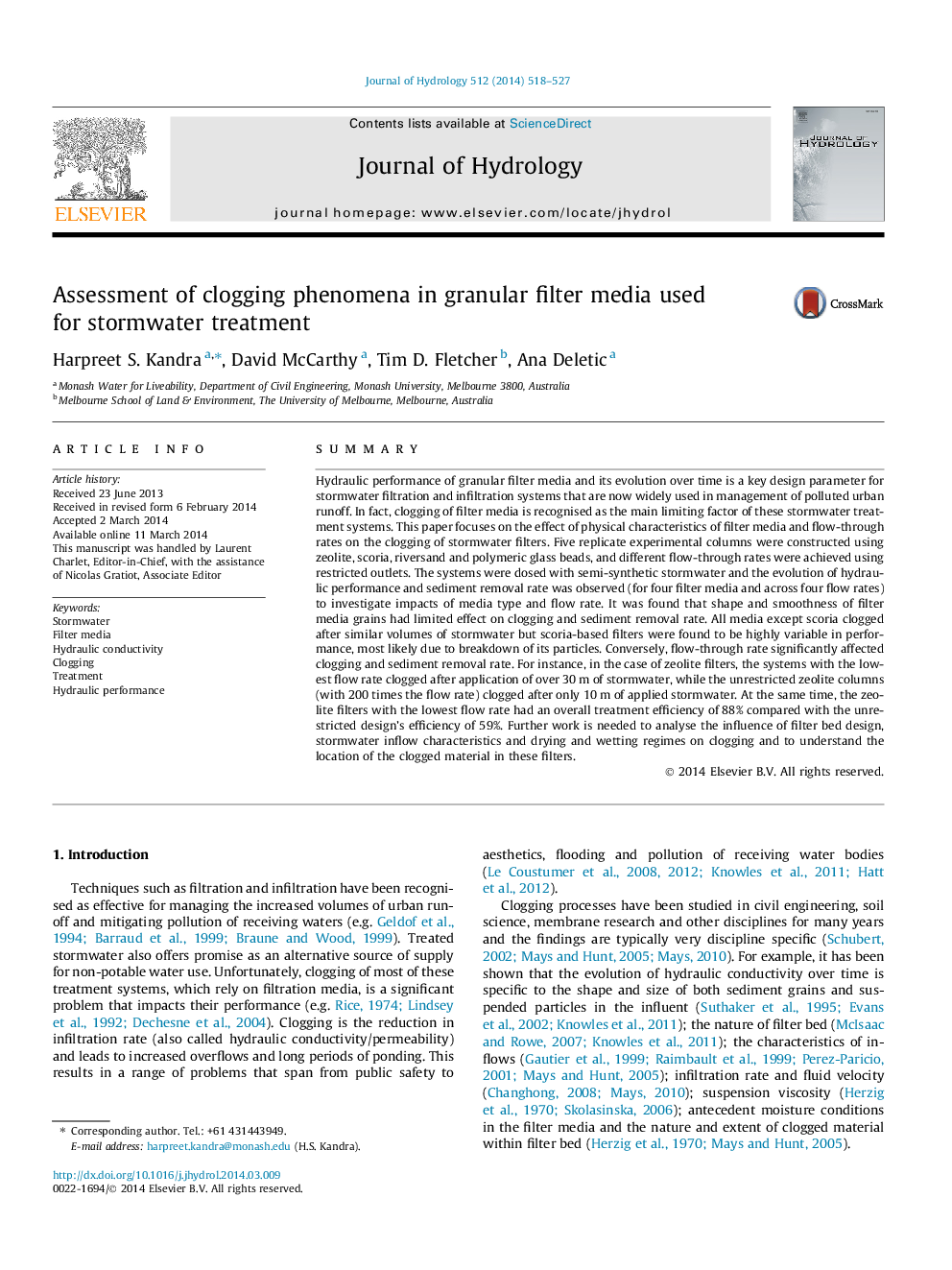| کد مقاله | کد نشریه | سال انتشار | مقاله انگلیسی | نسخه تمام متن |
|---|---|---|---|---|
| 6413161 | 1629936 | 2014 | 10 صفحه PDF | دانلود رایگان |
- We study effect of filter media physical characteristics and flow rates on clogging.
- Stormwater filters using zeolite, scoria, riversand and polymeric glass beads studied.
- Shape and smoothness of filter media had limited effect on clogging and sediment removal rate.
- Flow-through rate significantly affected clogging and sediment removal rate.
SummaryHydraulic performance of granular filter media and its evolution over time is a key design parameter for stormwater filtration and infiltration systems that are now widely used in management of polluted urban runoff. In fact, clogging of filter media is recognised as the main limiting factor of these stormwater treatment systems. This paper focuses on the effect of physical characteristics of filter media and flow-through rates on the clogging of stormwater filters. Five replicate experimental columns were constructed using zeolite, scoria, riversand and polymeric glass beads, and different flow-through rates were achieved using restricted outlets. The systems were dosed with semi-synthetic stormwater and the evolution of hydraulic performance and sediment removal rate was observed (for four filter media and across four flow rates) to investigate impacts of media type and flow rate. It was found that shape and smoothness of filter media grains had limited effect on clogging and sediment removal rate. All media except scoria clogged after similar volumes of stormwater but scoria-based filters were found to be highly variable in performance, most likely due to breakdown of its particles. Conversely, flow-through rate significantly affected clogging and sediment removal rate. For instance, in the case of zeolite filters, the systems with the lowest flow rate clogged after application of over 30Â m of stormwater, while the unrestricted zeolite columns (with 200 times the flow rate) clogged after only 10Â m of applied stormwater. At the same time, the zeolite filters with the lowest flow rate had an overall treatment efficiency of 88% compared with the unrestricted design's efficiency of 59%. Further work is needed to analyse the influence of filter bed design, stormwater inflow characteristics and drying and wetting regimes on clogging and to understand the location of the clogged material in these filters.
Journal: Journal of Hydrology - Volume 512, 6 May 2014, Pages 518-527
